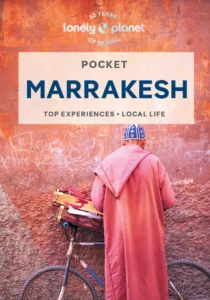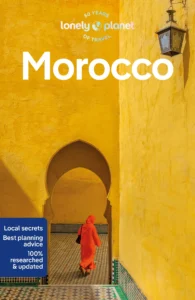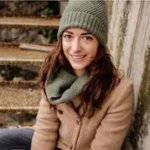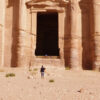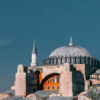Although some dishes of Moroccan cuisine have their origins in the Berber indigenous people, such as couscous, Moroccan food in general owes much to the influence of neighboring territories.
Traditional Moroccan cuisine is based on fresh produce, ranging from fruits and vegetables, to fish and meat. Sweets also feature widely. A traditional meal would start with a salad or vegetables. It would then be followed by the first course, often couscous or tagine. For dessert, you may have fruit and or pastries. The meal is usually accompanied by green tea.
In terms of meat, the most popular one is lamb, closely followed by beef, rabbit, chicken, turkey, and pigeon.
Fish and seafood are also abundant in Morocco thanks to its extensive coastline. Sea bream, sea bass, prawns, cuttlefish, oysters and mussels, you name it!
You will find many vegetables in Moroccan cuisine as well, served fresh in salads, grilled or stewed. Eggplant is omnipresent, as are tomatoes, peppers, onions, olive oil and olives. And don´t forget the delicious preserved lemons!
Spices are very popular in traditional Moroccan cuisine too. The most commonly used are anise, black pepper, cayenne pepper, cardamom, cinnamon, clove, coriander, cumin, ginger, paprika, parsley, saffron and turmeric. Besides, there are three essential seasonings: ´chermoula´ for marinades, ´harissa´, a spicy chilli-based condiment, and ´ras el hanout´, a mixture of over twenty spices typically used in tagines.
To finish on a sweet note, Moroccan desserts are delicious, as is usually the case throughout the Middle East. Some typical Moroccan pastries include briouat, chebakia, ghoriba, kaab el ghazal, m´hanncha, jawhara (milk pastilla) or sfenj.
Note that green tea is the national drink in Morocco. It is served several times a day, be it at home, in the office, in shops and in the cafés. The tea ceremony is almost always performed in front of the guests and follows unaltered rules. Moroccans are also great consumers of coffee (qahwa), which is usually served with milk but is often seasoned with cinnamon, orange blossom water or a few grains of pepper. Fresh orange juice is delicious, as are other fruit juices. The country also produces good wines even though the Koran prohibits alcohol consumption.
Tipping is customary in Morocco. Note that your tip should range between 5% and 10% of the total bill, always in cash, and should be left on the table.
As for alcoholic beverages, although Morocco is a Muslim country with very strict regulations on the sale of alcohol, the majority of mid-high category restaurants or with mainly foreign clientele are licensed to serve it.
Also take into account that, during the Ramadan fast, many restaurants close at midday.


